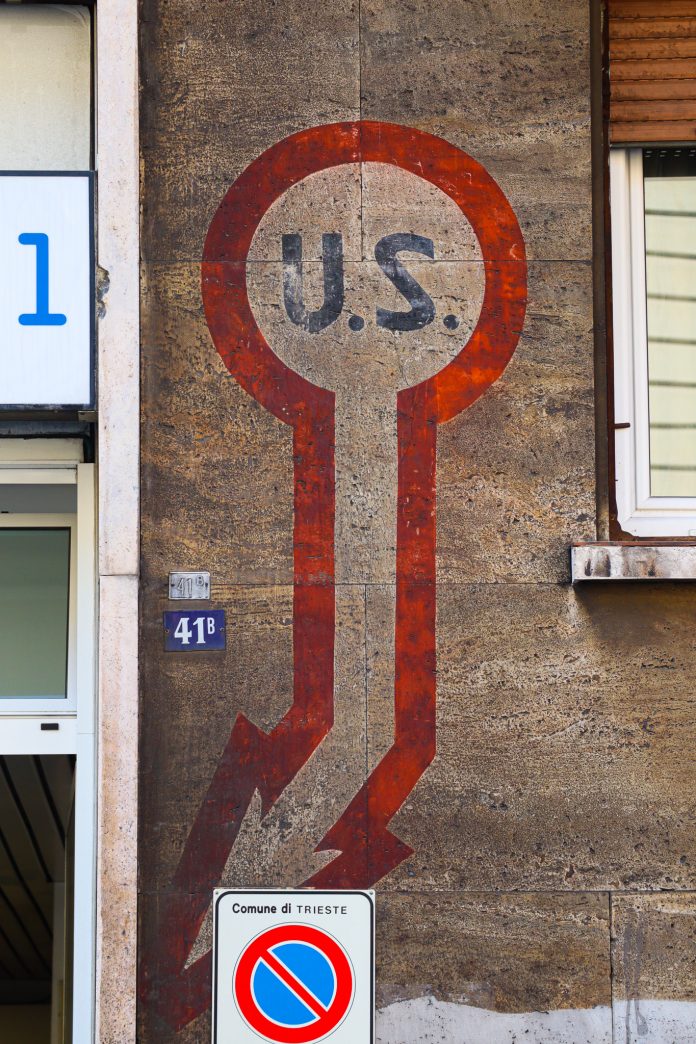By Victor Caneva
After moving to Italy, I began to notice faded symbols painted on older buildings. Some were letter “I’s” with circles around them. Others were more colorful and sported the letters “US,” which I ethnocentrically assumed referred to the United States. Friendly locals informed that the signs had to do with World War II era bomb shelters, but didn’t know much else about them. This week I finally got around to researching the meaning of these fascinating relics of the war.
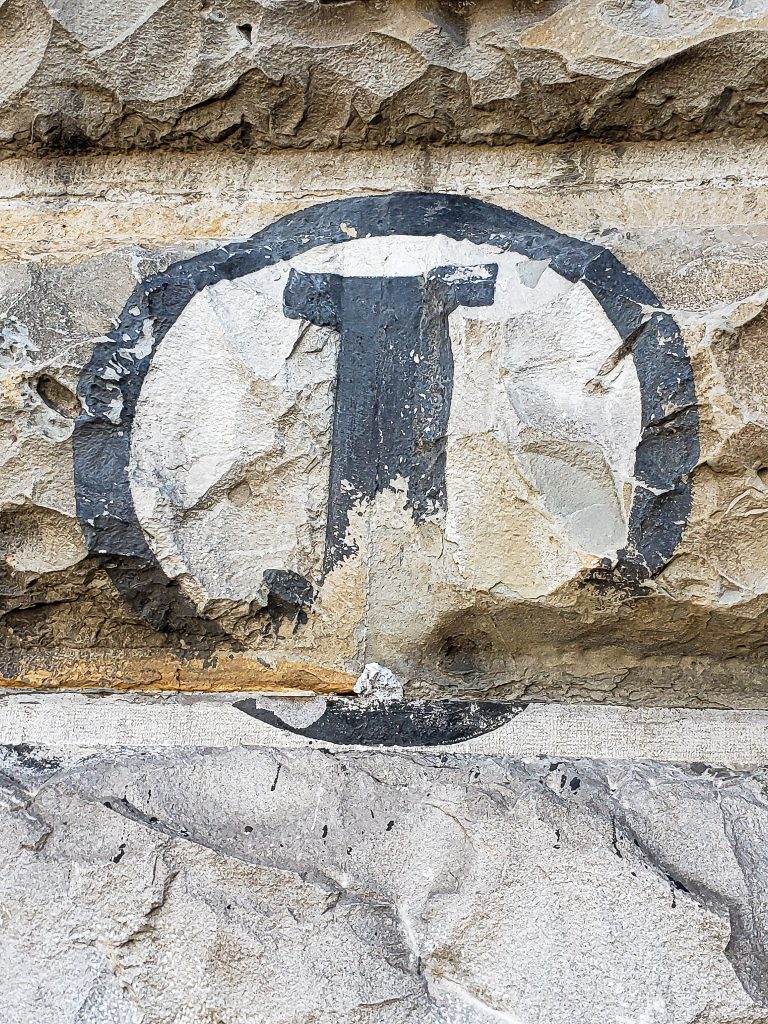
During the Second World War, communities were required to provide shelters to protect their citizens from potential bombings. Appropriate signage was required to ensure that the residents could easily find their way to safety during air raids and so emergency personnel could locate the survivors of a bombardment. Although there were several nationwide edicts about wartime symbols, the implementation of signs like these appears to have been coordinated at the local level, with the markers varying throughout Italy.
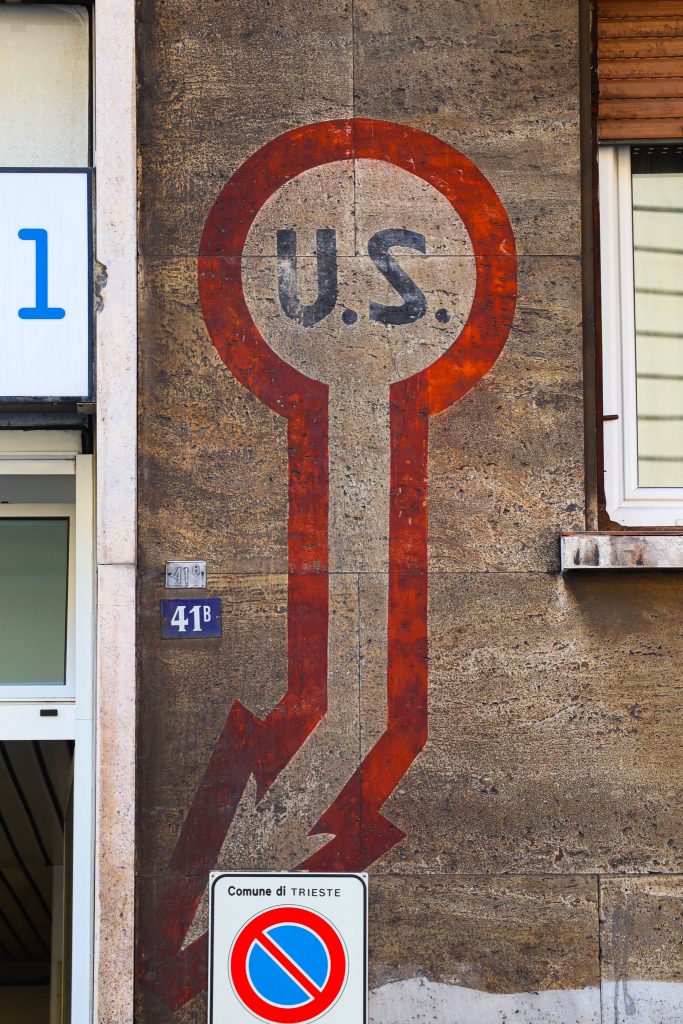
Walking around Trieste, the symbols I have noticed most are a black letter “I” with a white background and a black circle around it and the letters “US” in black with a red circle around them that continues downward in the shape of an arrow. I have heard some entertaining theories about their meanings and have even come up with a few embarrassingly overcomplicated ideas about the symbols myself, but their purposes are pretty straightforward. Despite my more interesting hypothesising, the “I’s” simply mark the location of an idrante, or hydrant, for use in the event of a fire resulting from an attack. Some of these “I’s” are also accompanied by a metal plate. “US” stands for Uscita di Sicurezza or “emergency exit.” These symbols were particularly important because they pointed rescue crews to the appropriate place to extract survivors from a collapsed building.
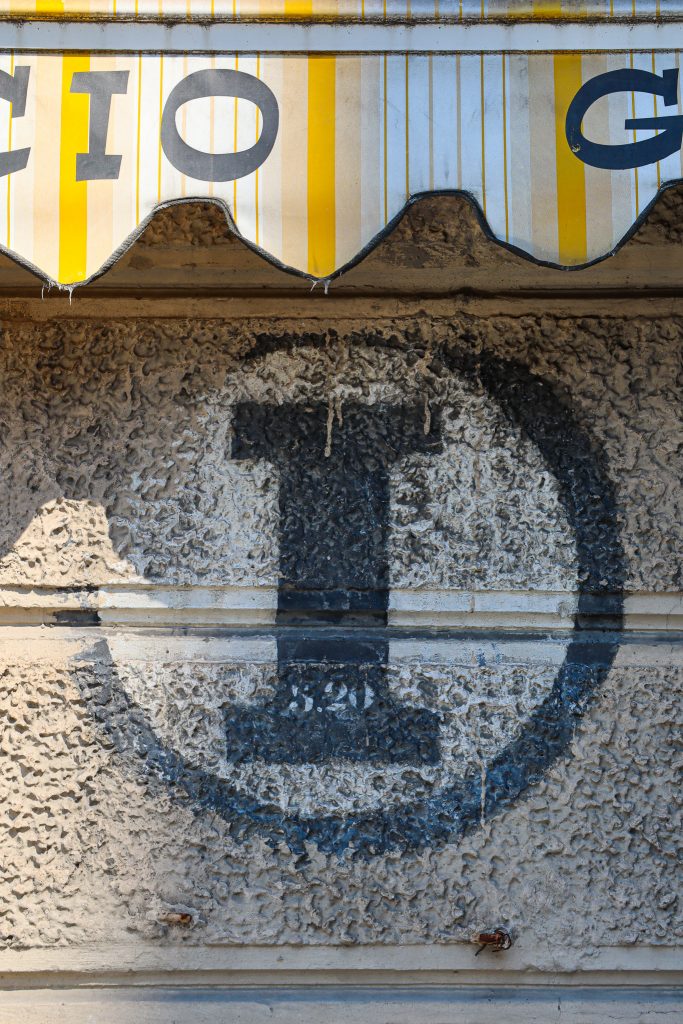
Trieste is home to almost 300 hundred of these sober reminders of wartime life. In addition to the Idrante and Uscita di Sicurezza signs, the city’s palazzi also feature several “P’s” for pozzo, indicating the presence of a well. I have only been able to confirm the existence of these three types of symbols in Trieste, but there very well may be more. In other parts of Italy, “R” indicates a refuge or place to receive medical care, “C” denotes a cistern or a canal, “F” can indicate a fountain, and “V” refers to ventilation areas for shelters.
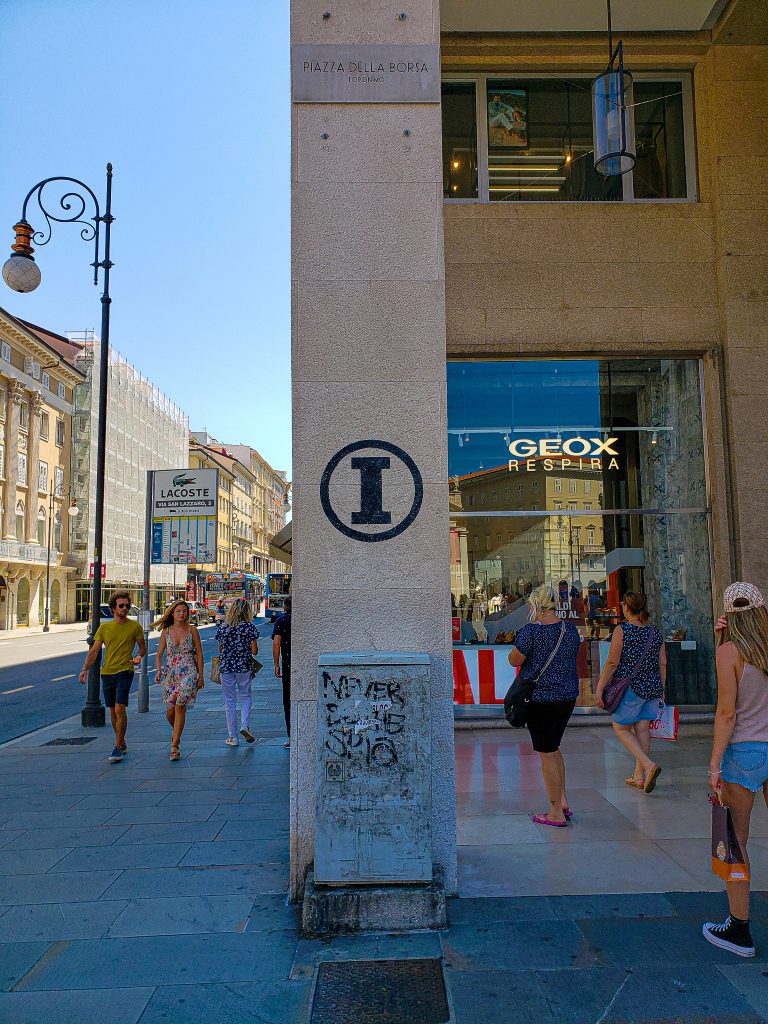
Although the theories I heard about “US” meaning the United States and “I” referring to Italy were entertaining and my argument that “I” had to stand for ingresso or entrance almost made sense, I’m pleased to ultimately discover the truth about these clues to Trieste’s wartime experience.

























